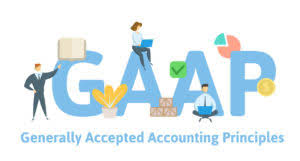
The new lease accounting standards, which are mandatory, require entities to record the majority of their leases to the balance sheet, including operating leases, whereas the old standards only required this for capital/finance leases. IFRS 16 is a global financial reporting standard set by the International Accounting Standards Board (IASB) that specifies how lessees and lessors should recognize, measure, present, and disclose leases. The standard aims to provide a more transparent accounting treatment for leases to ensure that lessees and lessors provide accounting for lease relevant information that faithfully represents those transactions.
- It’s important to know how to properly calculate the lease liability amortization schedule whether you plan to use Excel or lease accounting software.
- Tax laws related to 1099 forms for rental income have changed since Congress passed the American Rescue Plan Act in 2021, and the updates now affect rental property owners.
- Lessees are required to calculate the present value of future lease payments to establish a lease liability and the related ROU asset.
- When two or more investors co-own a rental property, each investor receives an allocation of the income and expenses based on the investor’s percentage share of ownership interest.
- Determining the length of the lease will be important for the appropriate accounting, as the lease term will take into consideration options to extend or terminate leases where these are ‘reasonably certain’ to be exercised.
- Adopting and maintaining compliance with IFRS 16 “Leases” requires thoughtful planning, robust internal controls, and the integration of technology solutions.
Recognition and Measurement of Leases

The right-of-use asset is initially recorded at the amount of the lease liability, adjusted for any lease payments made at or before the commencement date, plus any initial direct costs and restoration costs. A finance lease is a lease that transfers substantially all risks and rewards of ownership to the lessee. The lessee recognizes a right-of-use asset and a corresponding lease liability on the balance sheet. Bookkeeping for Painters In summary, lease accounting reforms present both challenges and opportunities for real estate firms.
Cash flow statement
For those entities with dual reporting requirements under both IFRS 16 and ASC 842, you will notice that the accounting for finance leases under IFRS 16 resembles the accounting for finance leases under ASC 842. While the lessee model for IFRS 16 is a single model approach, for lessors the operating and finance classification model continues. Lessors are required to determine if a lease is classified as an operating or finance lease and use the appropriate accounting treatment. ASC 842 became effective for private companies for fiscal years beginning after December 15, 2019. This allowed private companies additional time to comply with the new lease accounting standard, ensuring they report leases on their balance sheets.

Intangible assets (Section

The 2026 FRS 102 amendments significantly change lessee accounting by requiring recognition of right-of-use assets and lease liabilities. ASC 842 requires lessees to recognize both an asset and a liability for each lease. The lease asset is measured as the lease liability adjusted for certain items like prepaid rent, initial direct costs, and lease incentives.
- These can include fixed payments, variable payments, and other costs such as maintenance or service fees.
- Individuals need to push back against these hurdles to ensure compliance holds top priority.
- Rent Manager’s scalability and feature depth make it a great fit for landlords and property managers handling diverse rental portfolios, hence, the company rightly stands out as our best overall rental property management software.
- Discount the lease payments using the interest rate implicit in the lease, or if not readily determinable, the lessee’s incremental borrowing rate.
The ROU asset is treated similarly to other tangible fixed assets, meaning it is depreciated over the shorter of the lease term or the asset’s useful life. This ensures that the cost of using the asset is spread out appropriately over time. This approach closely mirrors IFRS 16, maintaining consistency payroll in how lease assets are systematically accounted for. At the inception of a contract, an entity must assess whether the contract is, or contains, a lease. This will be the case if the contract conveys the right to control the use of an identified asset for a period of time in exchange for consideration.



Leave A Comment